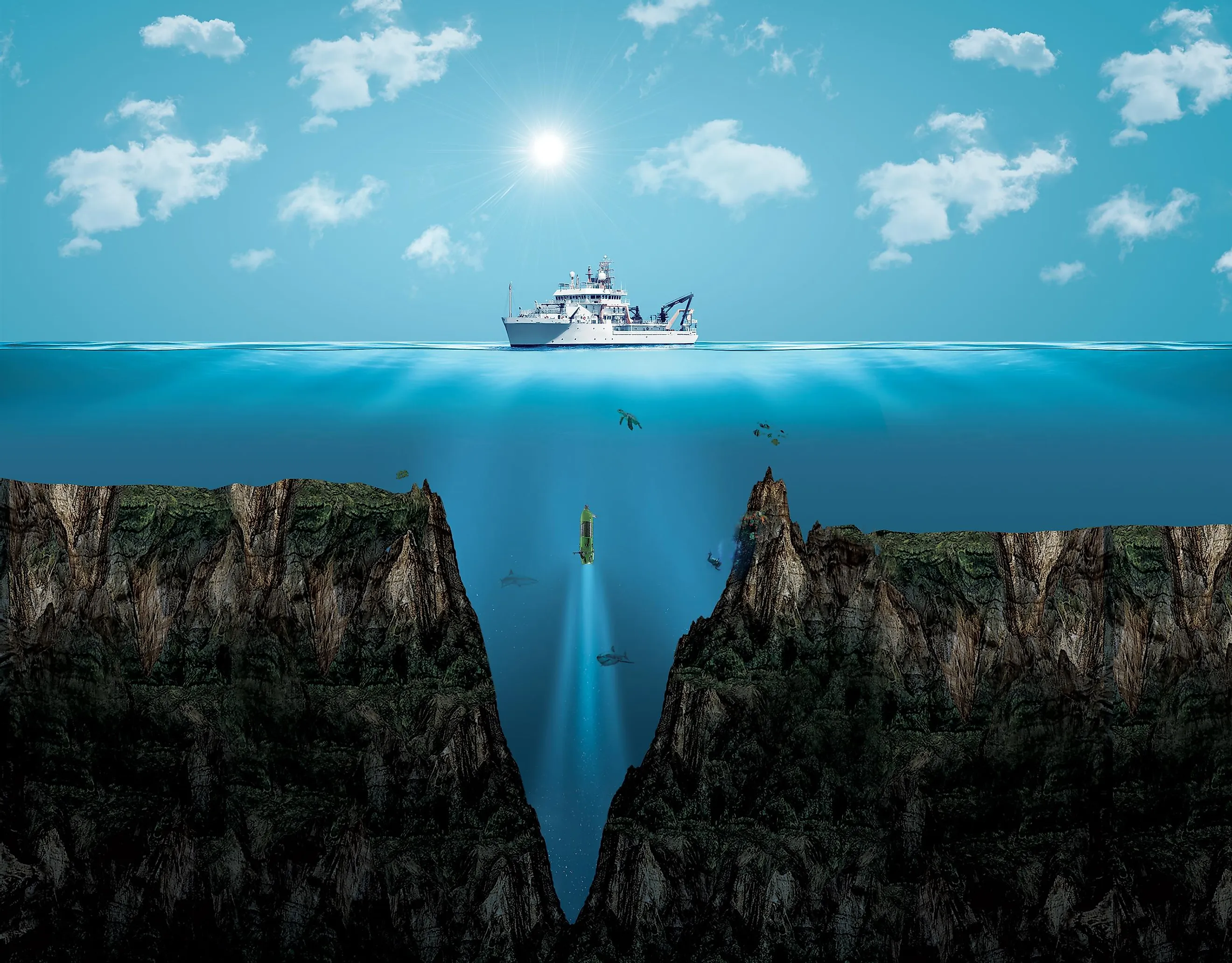
How Do Ocean Trenches Form?
Also referred to as “deep-sea trenches,” oceanic trenches are conspicuous, deep, narrow, steep sloping depressions on the ocean floor. Oceanic trenches are a distinctive feature of the Earth’s plate tectonics and are found at convergent boundaries, where two or more tectonic plates move towards each other at rates varying from a few millimeters to more than 10 cm yearly. Approximately 31,000 miles of oceanic trenches are known worldwide, the majority of which are placed around the Pacific Ocean, some in the eastern Indian Ocean, and just a few in the Mediterranean Sea and the Atlantic Ocean. The oceanic trenches form a part of the ocean’s hadopelagic zone and feature exclusive biomes based on chemotrophic microorganisms adapted to the region’s extreme environmental conditions. However, in recent years, concerns have been raised regarding the accumulation of plastic debris in the oceanic trenches, posing a severe threat to these unique biotic communities.
Where Are Oceanic Trenches Found?
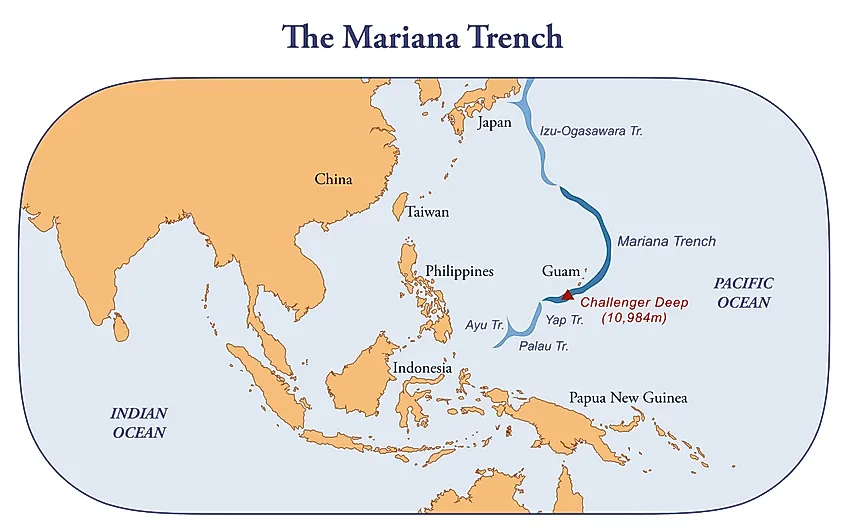
Oceanic trenches are found in the deepest ocean areas at maximum oceanic depths ranging between 24,000 to 36,000 ft, mainly at subduction zones on convergent plate boundaries. There are estimated to be more than 50 significant ocean trenches worldwide, occupying an area of 1.9 million sq. km, i.e., only 0.5% of the world’s oceans. Featuring a characteristic V-shaped profile, the trenches are placed on the island arcs’ oceanward side and the Andean-type orogenic belt. The deepest oceanic trenches in the world include the Mariana Trench in the western Pacific Ocean, the Philippine Trench in the east of the Philippines, the Tonga Trench near Tonga, the Kermadec Trench to the northeast of New Zealand, and the Kuril-Kamchatka Trench near the Kuril Islands. The greatest ocean depth has been measured at the Challenger Deep - the lowest point of the Mariana Trench, reaching a depth of about 35,830 ft below sea level.
History Of The Term “Trench”
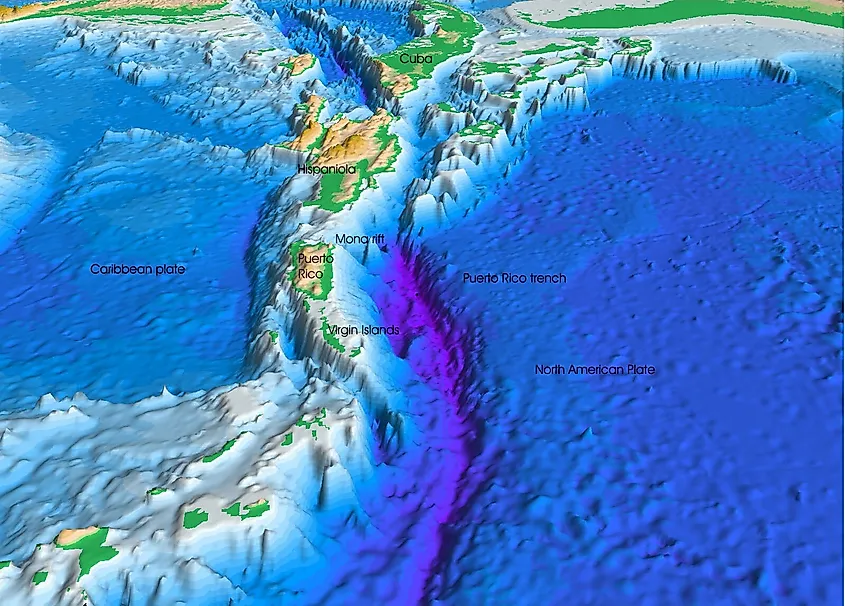
Before the Challenger Expedition, the ocean’s bathymetry was not well-known, and the trenches were also not very clearly defined. The 1872 to 1876 Challenger Expedition discovered “Challenger Deep” at the Mariana Trench’s southern end. In the late 19th and 20th centuries, the laying of transatlantic telegraph cables between the continents also stressed the need for improved ocean bathymetry. In 1923, Johnstone, in his book “An Introduction to Oceanography,” first used the term ‘trench’ in its truest modern sense. During the 1920s and 1930s, the noted Dutch geodesist Felix Andries Vening Meinesz used the gravimeter to measure gravity over the trenches. Based on his findings of ‘belts of negative gravity anomalies’ close to island arcs, he proposed the “tectogene hypothesis.”
In 1939, this hypothesis was further developed by Griggs and, in later years, by the well-known American geologist Harry Hammond Hess. During World War II, the widespread use of echo sounders led to rapid developments in marine research, especially in the western Pacific Ocean. The research efforts eventually led to the proper identification, sampling, and mapping of trenches via sonar. Nevertheless, in the early 1960s, after Harry Hess’s proposed the ‘seafloor spreading hypothesis,’ the oceanic trenches became a crucial concept in the theory of plate tectonics.
How Are Oceanic Trenches Formed?
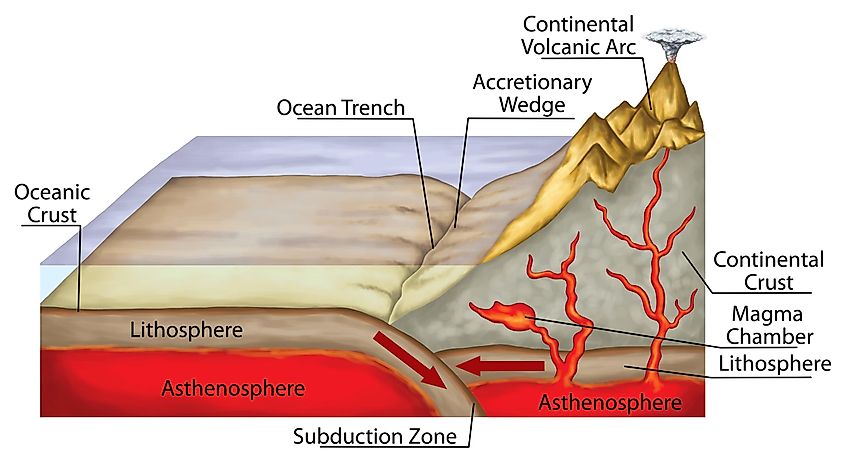
Oceanic Trenches are formed by a process called subduction, where two or more tectonic plates converge. The old denser plate slides beneath a younger, less-dense plate much deep into the mantle, resulting in the seafloor and lithospheric crust bending to form a deep V-shaped depression. A sharp ridge on the seafloor close to an oceanic trench known as the outer trench swell marks the place where a descending plate starts to bend and fault before its descent into the mantle at the subduction zone.
The asymmetric V-shaped oceanic trenches stretch long distances and have a maximum width of about 30 to 60 miles. Though extremely narrow, these long, continuous oceanic trenches form the Earth’s most extensive linear depressions. The trench’s overriding side has a steeper slope of about 8 to 20 degrees, while the subducting side has a gentler slope of about 5 degrees. The base of the trench, referred to as the “basal plate boundary shear,” is considered the boundary between the overriding and subducting plates. The trench’s depth depends on the oceanic lithosphere’s starting depth as it plunges into the trench, the angle at which the lithospheric slab plunges, and the sedimentation amount in the trench. For older oceanic lithosphere, both the starting depth and subduction angle are greater, which can be observed clearly in the western Pacific’s deep trenches.
Island arcs are formed when the overriding plate is oceanic. In this case, islands containing active volcanoes are formed on the overriding plate. In contrast, marginal trenches are formed when the overriding plate is continental. Both the island arcs and marginal trenches are associated with high-magnitude earthquakes that originate at a depth of 435 miles. It is to be noted that if the rate of material supplied is relatively high, then sediments can completely fill the trenches.
Often the trench’s island-arc slope is punctuated by a submarine ridge built up by deformed sediments that have been scratched off from the top of a descending plate. This type of ridge is known as an accretionary prism. A series of explosive volcanoes are usually observed on the overriding plate approximately 60 miles from the trench. For marginal trenches, these volcanoes form mountain chains, whereas, for island arcs, they form volcanic island chains.
Life In Oceanic Trenches
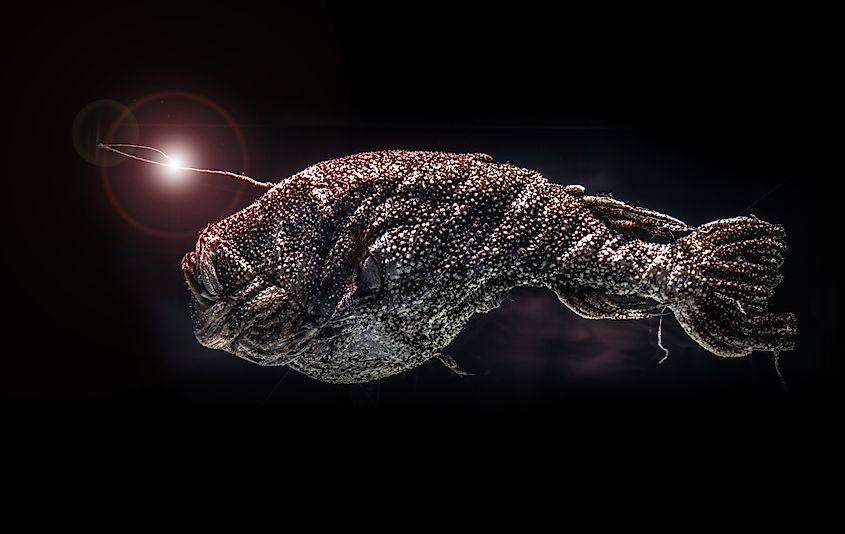
Ocean trenches are some of the Earth’s most hostile habitats that occupy the ocean’s hadopelagic zone. A complete lack of sunlight, low temperatures, high hydrostatic pressures, and scarcity of nutrients characterize these trenches. Therefore, most organisms that thrive here have evolved some unusual adaptations. Several endemic animals, like bulb-headed snailfish, copepods, kinorhynchs, isopods, nematodes, amphipods, and mysids, have been observed living in the trenches. In 1970, Abyssobrotula galatheae, a species of cusk eel, was discovered in the Puerto Rico Trench from a depth of 27,460 ft.
Due to the extreme depth and remoteness, our knowledge of these ocean trenches is quite limited. As the subduction zones are places of high seismic activity, scientists can better understand the causes of devastating earthquakes by studying the ocean trenches. Researchers can also get some information about the novel adaptations of the organisms that reside here, which might help to understand the origin of life and lead to advances in biomedical sciences. Moreover, recent studies have revealed that large amounts of carbon matter have accumulated in these trenches, which play a critical role in maintaining the Earth’s climate. The development of new deep-sea technologies will further help scientists properly investigate ocean trenches in the coming years.
Deepest Oceanic Trenches
| Name Of Trench | Location | Maximum Depth (In Ft) |
|---|---|---|
| Mariana Trench | Pacific Ocean | 35,830 |
| Tonga Trench | Pacific Ocean | 35,500 |
| Kuril-Kamchatka Trench | Pacific Ocean | 34,587 |
| Philippine Trench | Pacific Ocean | 34,580 |
| Kermadec Trench | Pacific Ocean | 32,963 |
| Izu-Ogasawara Trench | Pacific Ocean | 32,190 |
| New Britain Trench | Pacific Ocean (Solomon Sea) | 29,990 |
| Puerto Rico Trench | Atlantic Ocean | 27,490 |
| South Sandwich Trench | Atlantic Ocean | 27,116 |
| Peru-Chile Trench | Pacific Ocean | 26,427 |
| Japan Trench | Pacific Ocean | 27,598 |











